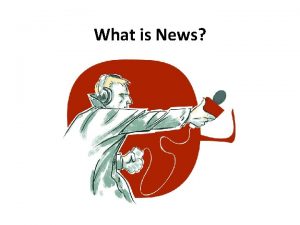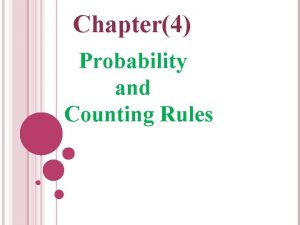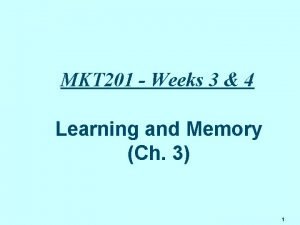News Reporting Mcom 201 Lifestyle Coverage Lifestyle Coverage







- Slides: 7

News Reporting Mcom 201 Lifestyle Coverage

Lifestyle Coverage • Lifestyle or feature stories should be light, frothy pieces about fads and fashions or serious and insightful ones about issues like rape, drugs or suicide rate. • Features linked to a news event are called news features. • Some are timely features linked to a holiday season or an event. • Stories without a time peg are known as use t hey can be run at any time. • Types of LIFESTYLE Stories. • Profile – feature stories about a particular person. • Trend features – stories that capture a trend, such as an increase in foreign students or a change in a fashion trend. • Service Feature – how-to, where-to-go, what-to-do stories that provide a service to your readers. • First Person accounts - stories in which the writer shares his or her own experience.

Lifestyle Coverage • Profiles: Feature stories which bring people on the pages of news stories are called profiles. • Trend stories: Trend stories capture fads, fashions and trends. • The best way to spot a trend is to look and listen around you. What are people wearing, doing talking about? What's hip, new or different? • Service feature: These stories offer expert advice and useful tips on meeting the challenges of life. • The key to a good service feature is lots of research. Talk to experts, interview relevant people.

Profile Writing Tips • A profile is a portrait of a person drawn in words. While writing a profile ask these questions. • 1. Does the lede entice the readers into the story? Does it capture the essence of a story. • 2. Does the profile include a graphic, physical description of the person? • 3. Are the quotes vivid and telling? • 4. Does the story include anecdotes or stories about the person? • 5. If there is a news peg for the feature (the subject recently won an award or is it the center of a current controversy), is it clearly and prominently stated?

Profile Writing Tips • 6. Does the profile include observations of the subject in different environments (at home, at work, at play, at school)? • 7. Does it include observations and comments about the subject from other people (family members, friends, coworkers, etc. )? • 8. Does the profile include age and relevant background material about the subject’s life (where the person grew up and currently lives, schools, jobs, past accomplishments)? • 9. Does the story include information that will be new or surprising to readers? • 10. Does the profile offer a well-rounded view of the person, including personality flaws and failures, as well as successes?

Lifestyle Coverage • Finding an Angle • Although stories are featured generally on generic topics like social problems, economic issues, the trick is to find a fresh angle. • Find sources which will give you something new to write about. • Reporting the Feature Story • Lifestyle stories might seem more frivolous than hard news article but that does not mean that they should not be reported seriously. • Lifestyle stories must be thoroughly reported. For this as many sources as possible should be interviewed to gather multiple points of view. • In lifestyle stories the sensory detail must be added which means that you want your reader to be able to feel, smell and taste things you are talking about.

Structuring the Feature Story • Many established writers use the writing technique developed by former Wall Street Journal reporter, William E. Blundell. He divides the feature story into four main parts; • The lede (Introduction) is about one to three paragraphs long and often starts with an anecdote. The anecdote should illustrate the main point you are trying to make. • The Nut graph, also called the “so what” graph explains in a nutshell what your entire article is about. Blundell called it the “main theme statement, the single most important bit of writing I do on my story. ” • The main body of the article consists of several blocks, each representing a different aspect of the main story. Each point should be driven home by use of examples, anecdotes, quotes and statistics. The paragraphs should flow smoothly from one to another. • The conclusion is something that ends the story with a punch. A catchy quote or an ending scene either sum up the story or reinforce the central message.













